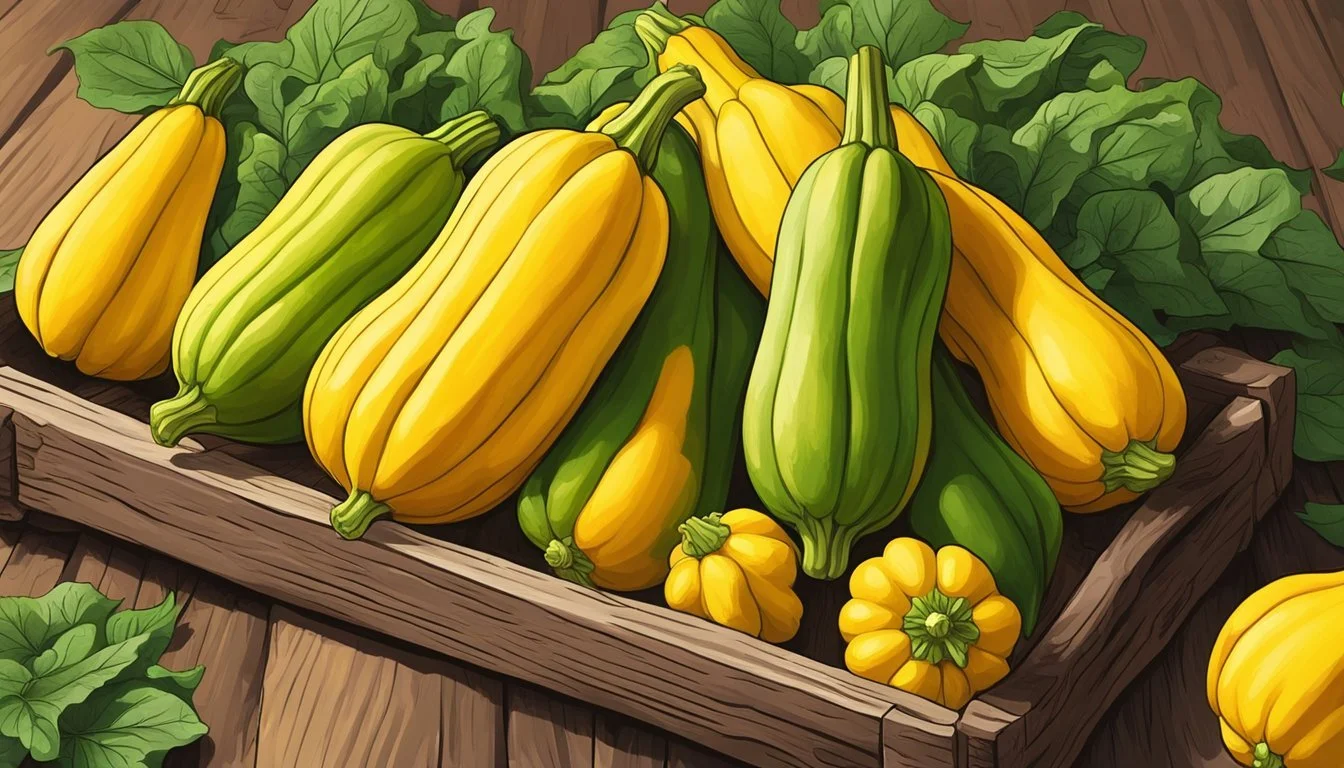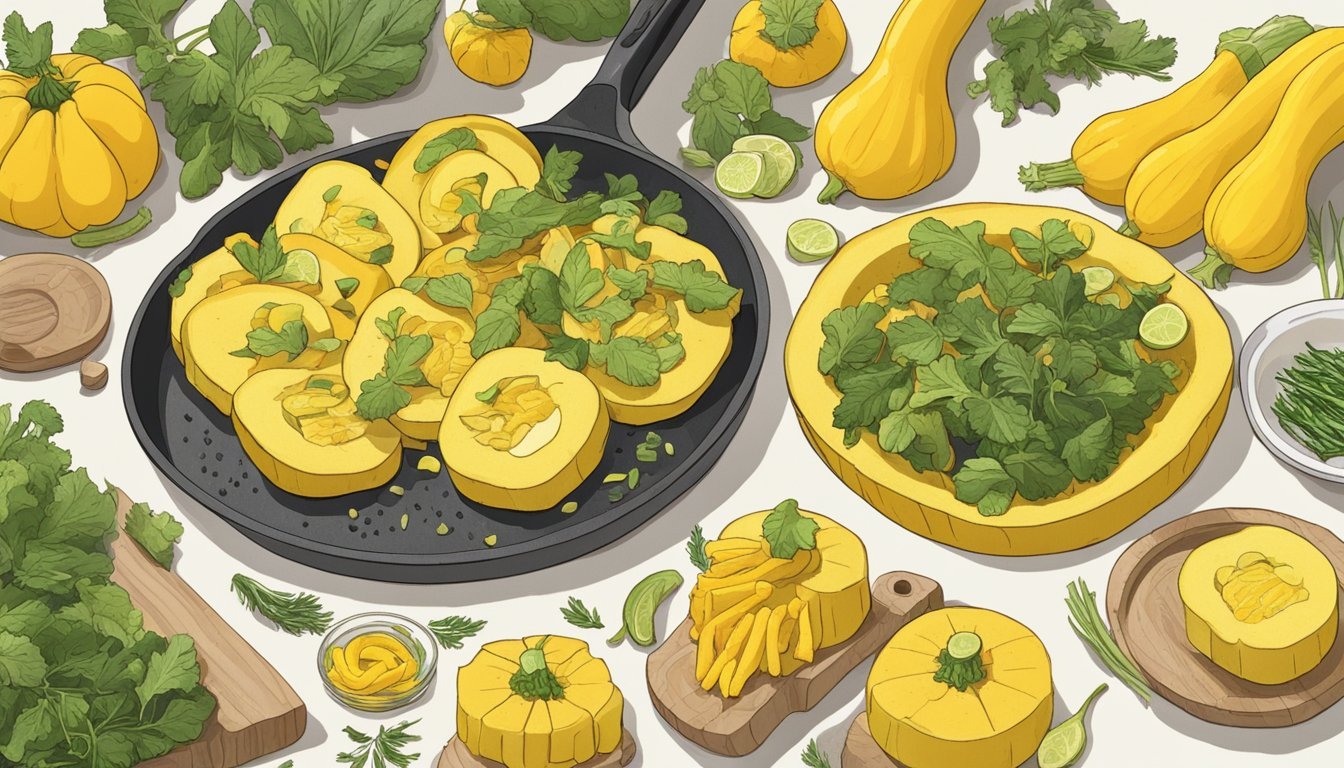What Are the Health Benefits of Yellow Squash?
Unveiling Nutritional Advantages
Yellow squash, a summer squash that boasts a bright yellow hue, is not just a versatile culinary ingredient but also a powerhouse of nutrition. It contains an impressive range of nutrients that contribute to overall health and well-being. A single cup of this vegetable is low in calories and contains negligible fat, making it an excellent choice for those looking to maintain a balanced diet. The squash is particularly high in vitamin C and other antioxidants, which play an essential role in protecting the body from the harmful effects of free radicals and supporting a healthy immune system.
Rich in dietary fiber, yellow squash aids in digestion and promotes a feeling of fullness, which can be beneficial for weight management. The skin of the squash is where a concentration of antioxidants, such as beta-carotene, lutein, and zeaxanthin, are found. These antioxidants are not only involved in protecting eye health but also contribute to maintaining the health of the skin and heart. Moreover, the vegetable offers a range of minerals, including calcium, which is vital for the development and maintenance of strong bones and teeth.
Incorporating yellow squash into one's diet can have multiple advantages. It is a vegetable that supports eye health thanks to nutrients like beta-carotene that the body converts to vitamin A, crucial for regulating light receptors in the retina. The presence of vitamins A and C in yellow squash further underlines its positive impact on bone health. Given its nutrient profile and associated health benefits, yellow squash stands out as a nutritious addition to a variety of meals, whether grilled, baked, or steamed.
Nutritional Profile of Yellow Squash
Yellow squash is a highly nutritious vegetable that's packed with essential vitamins, minerals, and other nutrients, while being low in calories and macronutrients. This makes it an excellent addition to a health-conscious diet.
Vitamins and Minerals
Yellow squash is a good source of several vitamins and minerals which are vital for maintaining overall health. It is especially high in:
Vitamin A: Important for eyesight, skin health, and immune function.
Vitamin C: Essential for the formation of collagen, which benefits the skin, blood vessels, joints, and bones.
Vitamin B6: Plays a role in brain development and maintaining a healthy nervous system.
Vitamin K: Necessary for blood clotting and bone metabolism.
The mineral content in yellow squash also contributes to its health benefits:
Potassium: Helps regulate blood pressure.
Magnesium: Aids in metabolism and muscle function.
Folate: Important for cell function and tissue growth.
Iron: Critical for oxygen transport in the blood.
Calcium: Essential for strong bones and teeth.
Additionally, yellow squash includes vital antioxidants such as beta-carotene, which is known to protect against certain types of cancer and heart disease.
Low-Calorie and Macronutrients
The macronutrient profile of yellow squash reveals that it is:
Low-calorie: Excellent for weight management.
Cholesterol-free: Making it a heart-healthy choice.
Low-fat: Contains minimal amounts of fats.
Fiber: Contains dietary fiber, which aids in digestion and promotes feelings of fullness.
The majority of its calories come from carbohydrates, which provide energy. However, it still has a low carbohydrate content overall, making it suitable for low-carb diets. Yellow squash contains small amounts of protein as well.
Health Benefits
Yellow squash is a nutritious vegetable that offers a multitude of health benefits. Packed with essential vitamins, minerals, and antioxidants, it supports various aspects of human health, from cardiovascular wellness to immune system protection.
Cardiovascular Health
Yellow squash is beneficial to heart health due to its content of potassium and magnesium, minerals that help regulate blood pressure. The vegetable contains fiber, which can lower cholesterol, specifically the Low-Density Lipoprotein (LDL), hence reducing the risk of heart disease. Phenolic compounds in yellow squash also contribute to the maintenance of healthy arteries and overall cardiovascular function.
Eye Health
High in lutein and zeaxanthin, two antioxidants found in yellow squash, regular consumption can aid in protecting against eye conditions such as macular degeneration and cataracts. Additionally, the presence of Vitamin A in yellow squash is crucial for the regulation of light receptors within the retina, enhancing overall vision and reducing the risk of blindness.
Cancer Prevention and Immune Support
Yellow squash contains antioxidants like Vitamin C and beta-carotene, which can combat free radicals, thereby reducing oxidative stress and potentially lowering the risk of various cancers. These antioxidants also bolster the immune system, making the body more capable of defending against infections and diseases.
Digestive Health and Weight Management
The fiber in yellow squash helps promote healthy digestion and can aid in preventing constipation. Being low in carbohydrates, yellow squash is also a suitable inclusion in weight loss diets. Its fiber content contributes to satiety, making one feel fuller for longer, which can help in managing calorie intake and supporting weight management efforts.
Culinary Uses of Yellow Squash
Yellow squash is a versatile vegetable that is widely incorporated into an array of recipes due to its adaptable texture and mild flavor. It can be found at grocery stores and farmers' markets, especially during the peak summer squash season.
Cooking Methods
Yellow squash can be cooked using various techniques that enhance its flavor and texture. Some of the most popular cooking methods include:
Roasting: Roasting in an oven at around 400 degrees after tossing the squash with olive oil and seasoning brings out a caramelized flavor and slightly browned edges.
Grilling: A light char and smoky taste can be achieved by grilling squash, making it an excellent side dish for barbecues.
Sautéing: Quick and easy, sautéing squash with garlic and olive oil results in a tender and flavorful bite.
Baking: Baked squash is often used in comforting casseroles and can be stuffed with a variety of fillings.
Steaming: For a softer texture and a healthy cooking option, steaming preserves nutrients and the squash's natural taste.
Flavor Pairings and Recipe Ideas
When it comes to recipes and flavor pairings, yellow squash is a culinary chameleon:
Vegetable Medleys: Combine with zucchini, corn, and tomatoes for a colorful summer side dish.
Soups and Salads: Slice thinly to add a tender crunch to salads or chop into chunks for a hearty addition to soups.
Casseroles: Layer with potatoes and cheese for a savory casserole that can be a main dish or side.
Fried and Breaded: Slices of yellow squash can be breaded and fried for a crispy snack or appetizer.
By considering the squash's flavor and texture, one can pair it with ingredients like garlic to deepen the taste or with other vegetables like corn and potatoes to create wholesome and satisfying dishes. Whether it is roasted, grilled, sautéed, baked, or steamed, yellow squash is an adaptable food that fits into many recipes and complements a variety of flavors.
Selection and Storage Tips
When purchasing yellow squash, whether from grocery stores or farmers' markets, consumers should look for ones that have a vibrant color and are firm to the touch. Mature squash should have a glossy skin that's free of bruises and blemishes. Smaller squashes tend to be more tender and flavorful than larger ones, which may be more fibrous and less palatable.
In terms of storage, yellow squash is best kept in the refrigerator to prolong its freshness. Use the following guidelines to ensure optimal quality and shelf life:
Refrigeration: Keep yellow squash in a produce drawer or on a shelf in the refrigerator, ideally in a perforated plastic bag to allow for air circulation. Avoid washing the squash before refrigeration to prevent premature spoiling.
Shelf Life: Properly stored, yellow squash can remain edible and maintain its quality for about 4-5 days. It's important to check the squash regularly and use it while it's fresh to get the most nutritional benefits.
Freezing: If longer storage is needed, it can be sliced or chopped and frozen. Blanch the squash first to preserve its texture and flavor, then freeze in airtight containers or freezer bags.
Remember that the nutritional content of yellow squash can degrade over time, so they should be eaten while still fresh to benefit the most from their nutrients. Proper selection and storage are key in enjoying the full potential of this nutritious and versatile vegetable.
Frequently Asked Questions
Yellow squash is a nutrient-dense vegetable that provides various health benefits. This section addresses common inquiries regarding its nutritional impact and effects on the body.
What nutritional advantages do squash seeds offer?
Squash seeds are rich in dietary fiber, essential vitamins, and minerals. They contain magnesium, which is crucial for many bodily functions and processes.
Can consuming yellow squash impact kidney health?
Yellow squash has a high water content and is low in potassium, which may be beneficial for individuals with kidney issues that require them to manage their potassium levels.
What potential health risks and benefits are associated with eating squash?
Yellow squash is generally safe and provides health benefits such as vitamin C and antioxidants. However, it may cause issues for those with specific food allergies or intolerances.
In what ways does yellow squash contribute to skin health?
The vitamin C and antioxidants present in yellow squash can support the formation of collagen and protect the skin from oxidative damage.
Does yellow squash have anti-inflammatory properties?
Yes, yellow squash contains anti-inflammatory compounds like carotenoids and phenolic compounds that may reduce inflammation in the body.
How does cooking affect the nutritional value of yellow squash?
Cooking can reduce some vitamin content, especially water-soluble ones like vitamin C. However, cooking can also make certain nutrients more bioavailable.




